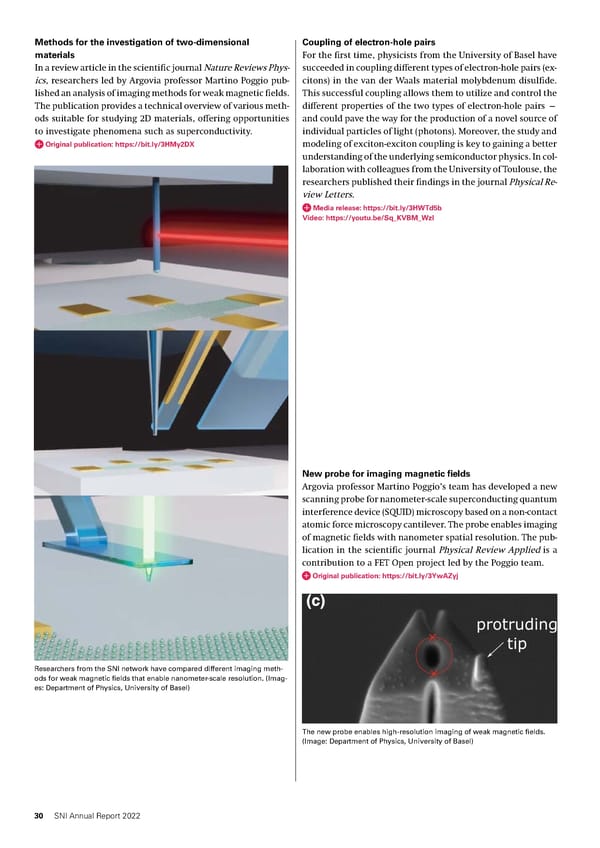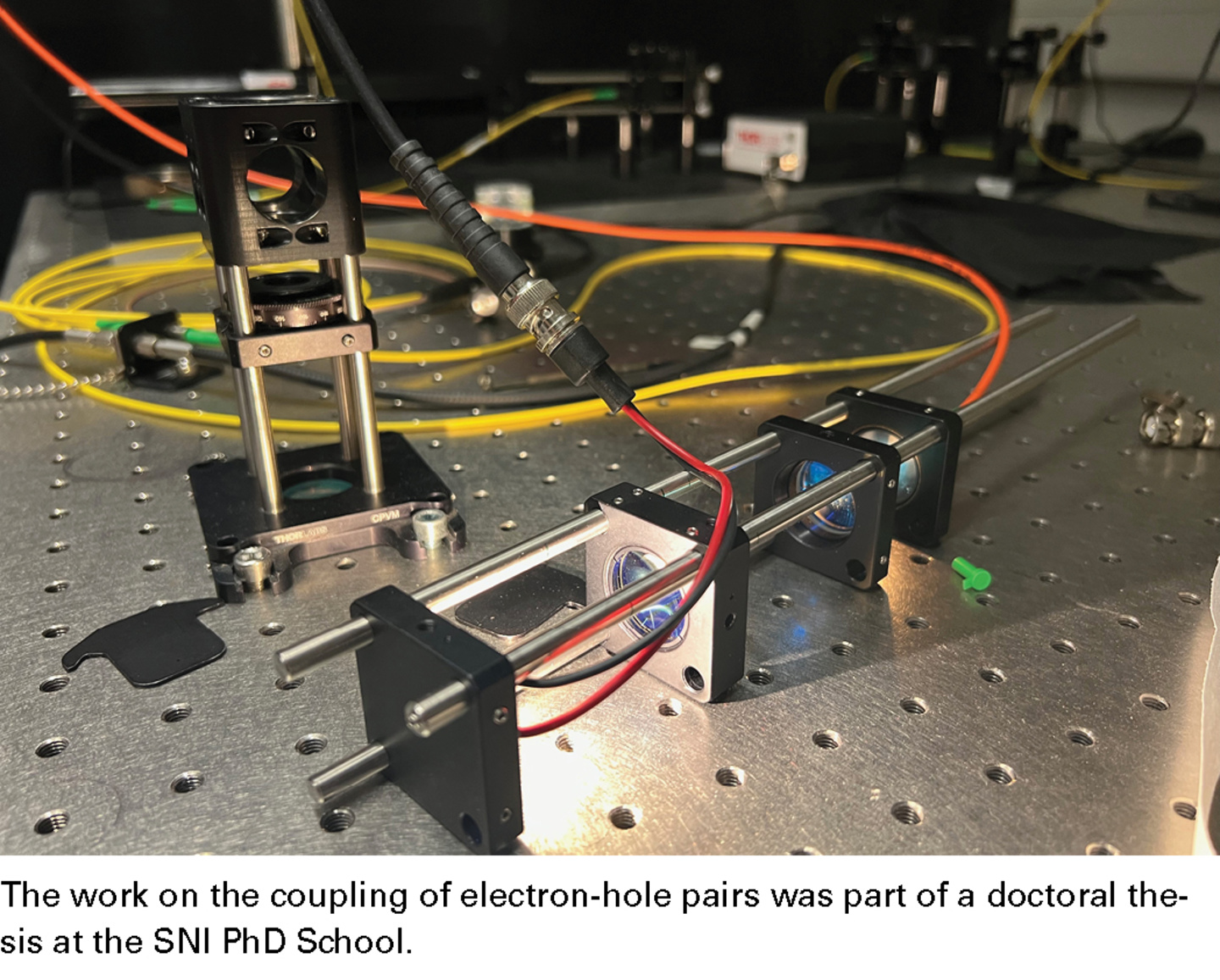Methods for the investigation of two-dimensional Coupling of electron-hole pairs materials For the first time, physicists from the University of Basel have In a review article in the scientific journal Nature Reviews Phys- succeeded in coupling different types of electron-hole pairs (ex- ics, researchers led by Argovia professor Martino Poggio pub- citons) in the van der Waals material molybdenum disulfide. lished an analysis of imaging methods for weak magnetic fields. This successful coupling allows them to utilize and control the The publication provides a technical overview of various meth- different properties of the two types of electron-hole pairs — ods suitable for studying 2D materials, offering opportunities and could pave the way for the production of a novel source of to investigate phenomena such as superconductivity. individual particles of light (photons). Moreover, the study and Original publication: https://bit.ly/3HMy2DX modeling of exciton-exciton coupling is key to gaining a better understanding of the underlying semiconductor physics. In col- laboration with colleagues from the University of Toulouse, the researchers published their findings in the journal Physical Re- view Letters. Media release: https://bit.ly/3HWTd5b Video: https://youtu.be/Sq_KVBM_WzI New probe for imaging magnetic fields Argovia professor Martino Poggio’s team has developed a new scanning probe for nanometer-scale superconducting quantum interference device (SQUID) microscopy based on a non-contact atomic force microscopy cantilever. The probe enables imaging of magnetic fields with nanometer spatial resolution. The pub- lication in the scientific journal Physical Review Applied is a contribution to a FET Open project led by the Poggio team. Original publication: https://bit.ly/3YwAZyj Researchers from the SNI network have compared different imaging meth- ods for weak magnetic fields that enable nanometer-scale resolution. (Imag- es: Department of Physics, University of Basel) The new probe enables high-resolution imaging of weak magnetic fields. (Image: Department of Physics, University of Basel) 30 SNI Annual Report 2022
 SNI Annual Report 2022 Page 29 Page 31
SNI Annual Report 2022 Page 29 Page 31
